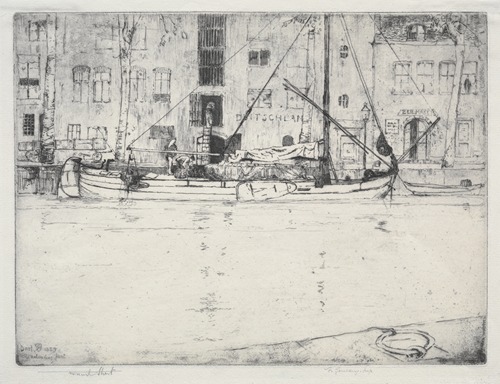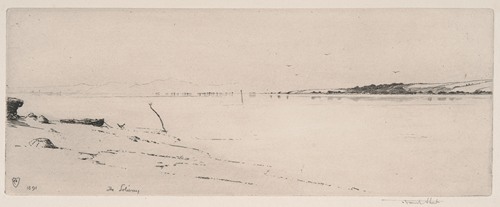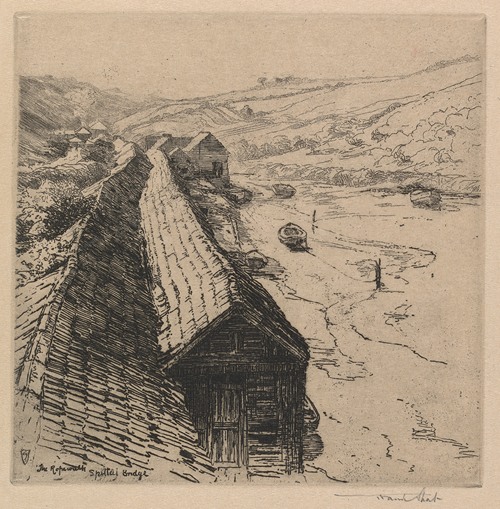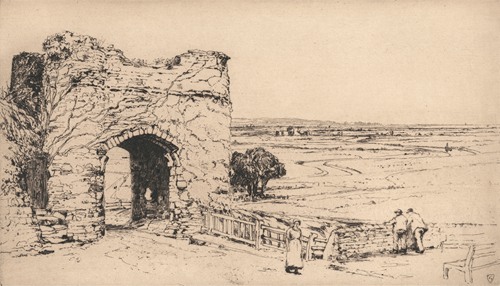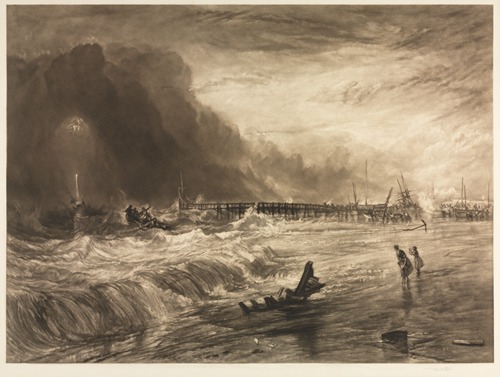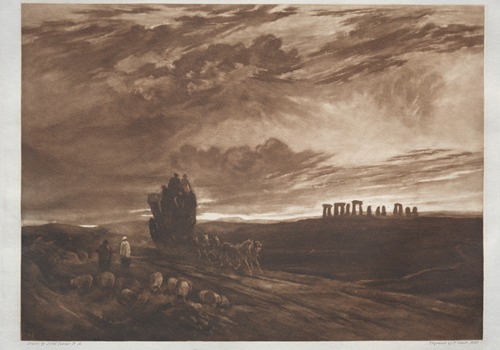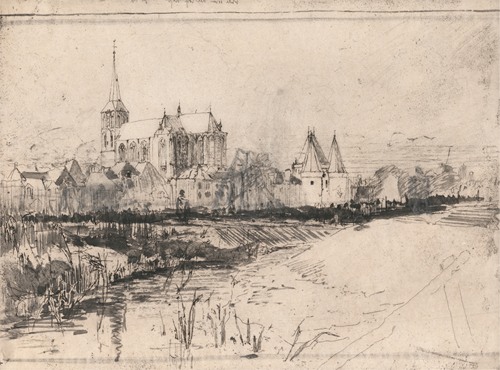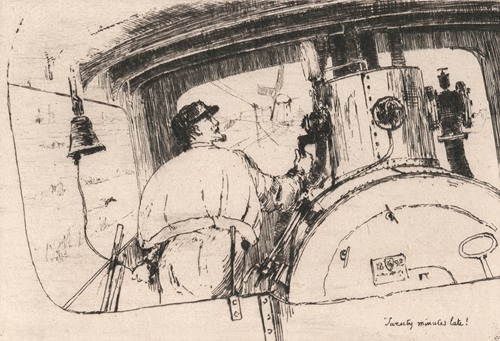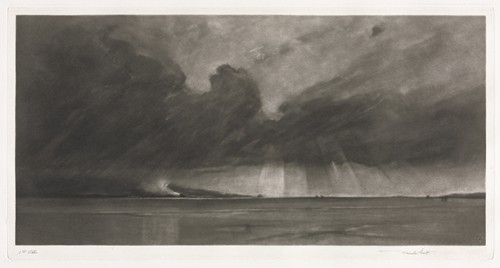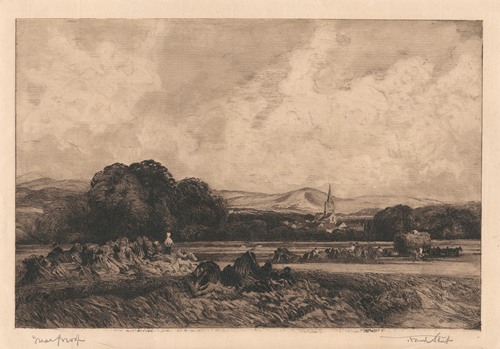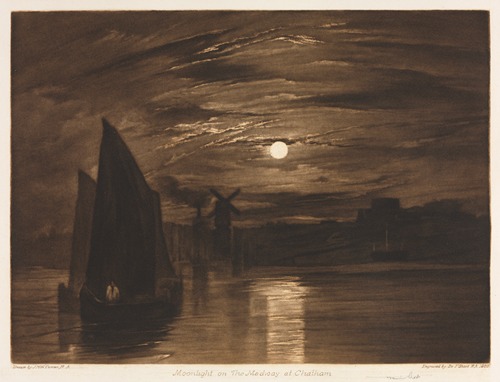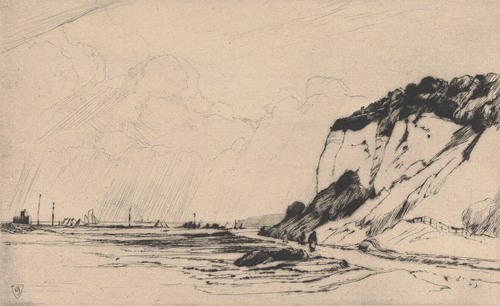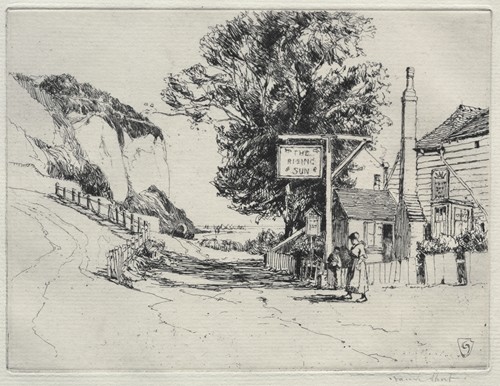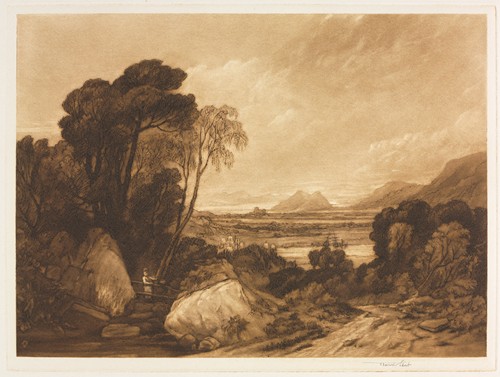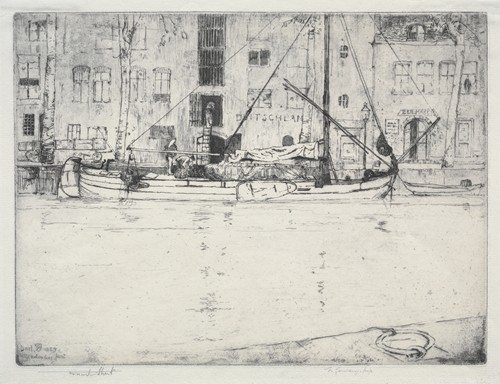
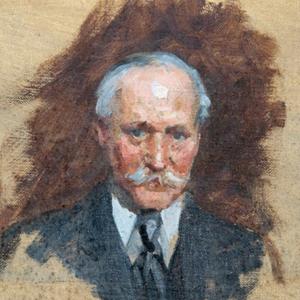
Sir Francis Job "Frank" Short RA PPRE was a British printmaker and teacher of printmaking. He revived the practices of mezzotint and pure aquatint, while expanding the expressive power of line in drypoint, etching and engraving. Short also wrote about printmaking to educate a wider public and was President of the Royal Society of Painter Etcher & Engavers (now styled the Royal Society of Painter-Printmakers) from 1910 to 1938. He was a member of the Art Workers' Guild and was elected Master in 1901.
Francis (Frank) Job Short was born on 19 June 1857, in Wollaston, a suburb of Stourbridge, Worcestershire. He was first educated to be a civil engineer.
Short was engaged on various works in the Midlands until 1881, when he came to London as assistant to Baldwin Latham in connection with the Parliamentary Inquiry into the pollution of the river Thames. In 1883 he was elected an associate member of the Institution of Civil Engineers. Having studied at the Stourbridge School of Art in his early years he joined the South Kensington School of Art (the first name of the current Royal College of Art) in 1883. Short also studied at the life class under Professor Fred Brown at the Westminster School of Art, and for a short time at the Schools of the Royal Institute of Painters in Water Colours.
His real life-work now became that of an original and translator engraver. He was a keen student of the works of JMW Turner; and his etchings and mezzotints from Turner's Liber Studiorum (1885 seq.), examples of painstaking devotion and skill, were among his earliest successes, combining sympathetic study of the originals with a full knowledge of the resources of engraving and unwearied patience. Short received praise, constant advice and encouragement from John Ruskin, and the co-operation of students of Turner such as William George Rawlinson and the Revd. Stopford Augustus Brooke. After completing the series from the existing plates of Turner's "Liber" Short turned to the subjects which Turner and his assistants had left incomplete. Several remarkable plates resulted from this study, bearing the simple lettering "F. Short, Sculp., after J. M. W. Turner, R.A.," which told little of the work expended on their production even before the copper was touched. He was consulted by Whistler for his expertise in printmaking and became friends.
Short also reproduced in fine mezzotints several pictures of George Frederick Watts, "Orpheus and Eurydice," "Diana and Endymion," "Love and Death," "Hope," and the portrait of Lord Tennyson, all remarkable as faithful and imaginative renderings. His own fine quality as a watercolour painter made him also a sympathetic engraver of the landscapes of David Cox and Peter de Wint.
A blue plaque marks Short's former home from 1898 to 1927 at 56 Brook Green, Brook Green, Hammersmith, London.
